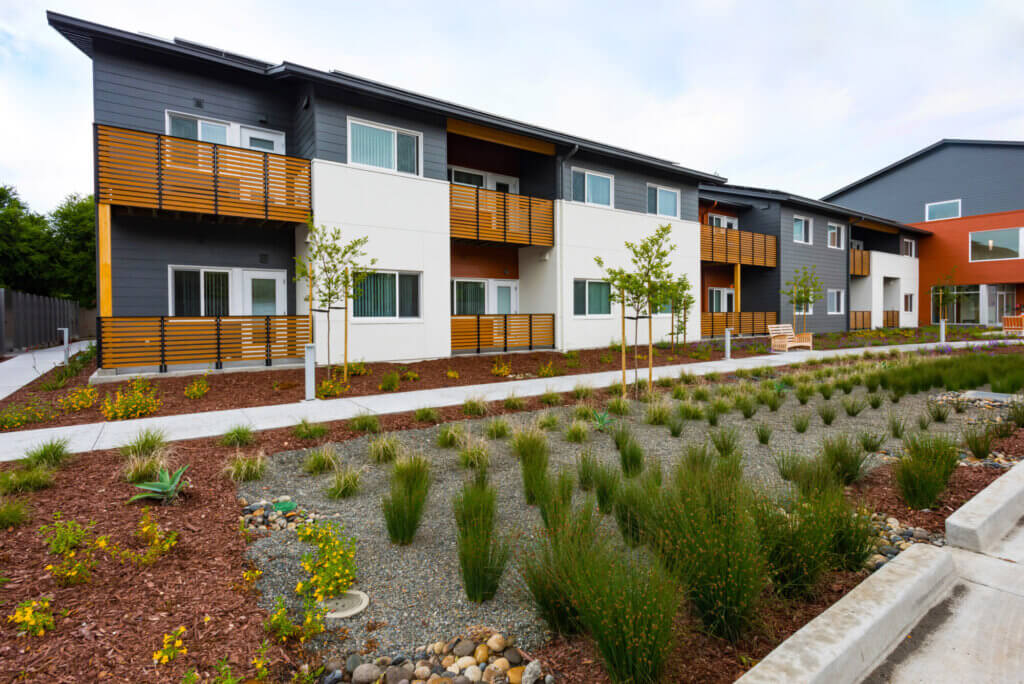Rowing in the Same Direction? Aligning Sustainability and Housing Policies, Strategies and Goals
Published On April 11, 2017
Access to quality housing in stable neighborhoods is increasingly recognized as a fundamental building block for individual and family outcomes. Where you live, how much you spend on your housing, and how stable a place it is for you and your family has well-documented effects on economic prosperity, educational attainment, and health and well being, among others.
Meanwhile, the location, design and affordability of housing is also deeply tied to issues of environmental justice and climate change. As related but distinct segments of the environmental field, housing and housing policy play an important though often under-discussed role in both issues: on the one hand, the type and location of your housing can be intimately tied to pollution exposure, air quality, water quality and other environmental justice issues. At the same time, those same variables can affect whether and how many miles you need to drive to work, and your household’s contribution to CO2 emissions.
Recognizing the link between land use and housing patterns and environmental issues (both environmental justice and climate change goals) has been an important step forward for both sectors in recent years. As we pursue private sector practices and policies that factor in the goals of both sectors, however, we have come to confront a tricky reality: aligning the programs, policies, and funding that support climate change goals – such as greenhouse gas reductions – with those that support housing goals – such as housing affordability – is easier said than done.
Take California as an example. With some of the most ambitious emissions reduction targets in the nation, California is also straining under tremendous population growth and housing affordability pressures. The solution to the latter issue is complex, but must involve the production of more housing, more affordably. Increasing the supply is traditionally done through greenfield development and suburban sprawl, where land is readily available and the cost of production is relatively cheap. However, while building more housing in the suburbs may address supply constraints and help bring down the overall cost of housing, it brings up the overall miles families need to drive to access jobs and other amenities available in urban centers.
Legislation such as California’s Sustainable Communities and Climate Protection Act of 2008 (SB 375) have begun to get at this issue by encouraging land use planning that is more in line with climate change goals. According to our forthcoming analysis on the subject, however, this law doesn’t yet have the necessary combination of incentives and penalties to ensure sufficient or sufficiently well-sited housing production that meaningfully addresses either affordability or climate change challenges.
Other types of goals and priorities could also challenge the alignment of housing and environmental policies. For example, with the support of the 2015 Department of Housing and Urban Development’s Affirmatively Furthering Fair Housing Final Rule, many communities and stakeholders are working to ensure that funding streams, policies and approvals processes site affordable housing development in places connected to quality schools, jobs,and other resources, so that residents may access the same opportunity as higher-income neighbors and support their movement out of poverty. While in some cases, these are also walkable urban communities connected to transit, in many cases they are not.
These examples represent just two of the several points of potential incongruity between housing and environmental goals. But these frictions are not without potential for resolution; there are ways to create housing that is affordable, connected to opportunity, and contributing to greater sustainability and environmental justice. The Terner Center is committed to identifying and promoting the policy ideas and private sector practices that best achieve those mutually beneficial outcomes.
For example, we recently released a co-authored study with the UC Berkeley Center for Law, Energy and the Environment, supported by Next 10, that explores a housing production scenario in which California would address its supply shortage by building new housing in urban “infill” locations accessible to jobs and transit (rather than in suburban or rural areas). What did we find? This “target” scenario can be achieved at no added expense to residents (in fact, lowered cost of transportation would save both renters and homeowners a nominal amount each month), would reduce greenhouse gas emissions by 1.79 million metric tons, and would have the added benefit of generating over $800 million in additional economic activity compared to business-as-usual development patterns. The report concludes that with the right policies (many of which are proposed within), density is both a plausible and effective tool to meet both climate change and housing goals.
Meanwhile, a key conclusion of our SB 375 analysis articulates something similar: with strengthened incentives and enforcement mechanisms, this hallmark legislation could be instrumental in producing the right kind of housing, at the right price for residents, while helping to achieve climate change goals.
On a national scale, aligning these intimately related, but somewhat siloed issue areas is going to take a few key things: policymakers continuing to recognize their interdependence and promote the kinds of win-win policies that thoughtfully address both issues; both housing and environmental advocates developing closer ties and deeper understanding of each other’s priorities and challenges to support this type of policy development; private sector actors such as designers and developers taking the helm to lead on housing and planning for greater sustainability and resilience and; institutions like the Terner Center offering the kind of analyses needed to better understand these potential areas for private sector innovation, these current and prospective tensions and misalignment in policymaking, and most importantly: the creative, pathways forward to better align and promote housing and environmental sustainability.
As we dive in earnest into this area of our work, we look forward to learning from those already working at the nexus of these issues, and sharing our future findings, analyses, and big ideas to help propel both housing and sustainability goals forward.





